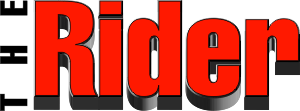Insiders Guide: Transitions
Pro and Non-Pro articles written by Jen Jonas of Jonas Performance Horses (Pro) and Sharon Jones of Be A Better You (Non-Pro).
Together, they are J&J Reining Inc. Both Jen and Sharon are believers in continual learning – if you’re not learning you’re not growing.
 Sharon: I’ve been working with Jen as my coach for quite a while now – Jen helped me ‘finish’ the training on my reining horse Jade, who is now doing great things with her current owner. Regardless of the horse, Jen has always coached me on transitions. As they are such a key element, Jen felt it important to explain why. Over to you Jen!
Sharon: I’ve been working with Jen as my coach for quite a while now – Jen helped me ‘finish’ the training on my reining horse Jade, who is now doing great things with her current owner. Regardless of the horse, Jen has always coached me on transitions. As they are such a key element, Jen felt it important to explain why. Over to you Jen!
Jen: I can’t say enough about how important transition work is in training. I believe a lot of riders don’t do enough of these in their workouts. Often, without direction, some non-pro riders can end up loping endless circles. Although for a reiner the ability to lope a circle is critical, it’s only a part of the training. Doing circles incessantly has no value; it’s also pretty boring for the horse! Transitions at all three gaits are beneficial to balance and to create self-carriage of the horse. When a horse has learned this self-carriage, any maneuver that you may ask of them will be easier to accomplish, no matter what discipline you are riding.
As I ride and train reining horses, I see improvement in my horse’s stops, spins, lead changes and speed changes in circles. Lead departures look prettier and they will be able to carry themselves better in the circle work. It also creates better communication between horse and rider as your horse pays more attention to your seat. All in all, a pretty cool feeling!
 Sharon: Although I have done many transitions under Jen’s guidance when I go for a lesson, I wanted to get a method from Jen that I could re-create at home, as I often ride alone or with another non-pro. One of the most valuable pieces of information I got from Jen was during our very first lesson – I was over-flexing the horse and Jen told me to imagine I was riding a coffee table, not one of those wiggly ones from the 1980s (Jen’s words!) but a straight coffee table. I work well with visuals so imagining a straight coffee table helped me keep the horse straight. The second visual Jen gave me that stays with me is to visualize I am driving a speed boat – with the engine at the back, the front end is lifted. And that is a key for correct transitions.
Sharon: Although I have done many transitions under Jen’s guidance when I go for a lesson, I wanted to get a method from Jen that I could re-create at home, as I often ride alone or with another non-pro. One of the most valuable pieces of information I got from Jen was during our very first lesson – I was over-flexing the horse and Jen told me to imagine I was riding a coffee table, not one of those wiggly ones from the 1980s (Jen’s words!) but a straight coffee table. I work well with visuals so imagining a straight coffee table helped me keep the horse straight. The second visual Jen gave me that stays with me is to visualize I am driving a speed boat – with the engine at the back, the front end is lifted. And that is a key for correct transitions.Jen: Both upward and downward transitions need to be smooth. When a horse can do these well is when their movement is beautiful and fluid to watch, it looks effortless!
Here’s the most common questions I get asked. How do I create correct up transitions?
• Forward impulsion comes from the hocks up through the back (visualize you are riding up a hill or driving the speed boat)
• Work on keeping soft and steady hands to encourage the horse to go forward into the bridle
• Keep the horse’s rhythm of gait, imagine a metronome methodically creating that rhythm
 How do I create correct down transitions?
How do I create correct down transitions?
• Still think forward impulsion - coming from the hocks up through the back
• Sit softly against the horse as they are transitioning down
• Work on closed, soft hands; just enough to prevent the horse to fall on their forehand
• Keep the rhythm as the horse slows down, the beat will be slower yet still in rhythm
What makes an incorrect transition?
• Lack of impulsion – think about the rhythm
• When the rider is stiff and braces with their seat and hands
• If the horse hollows their back with their neck tight and braced – this feels uncomfortable for the rider and is not comfortable for the horse either
• If the horse falls on the forehand and pushes through the bridle
The end results of a correct transition:
• More forward energy
• Your horse will be able to round their back and not brace in their front end
• Your horse will be lighter on their feet
• Your horse becomes more responsive and with lighter cues
• Your horse’s shoulders will be more elevated allowing self-carriage
*Images shown are horses with correct self-carriage accomplished through transition work


